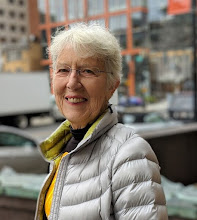On Saturday, March 23 at 2 PM, a poetry-event is planned at Descanso Gardens in La Cañada Flintridge, California to celebrate the life of poet, math teacher, and activist Amy Uyematsu (1947-2023). It was my pleasure to be connected to Amy via various math-related events and her work has been included in previous postings in this blog. (Here's a link to a list of those earlier posts.)
One of my favorite poems of Amy's is "The Meaning of Zero: A Love Poem." The complete poem is found here at Poets. org and in the collection Strange Attractors: Poems of Love and Mathematics-- and I offer its opening stanzas below.
 |
| Uyematsu's complete poem is available at this link. |




